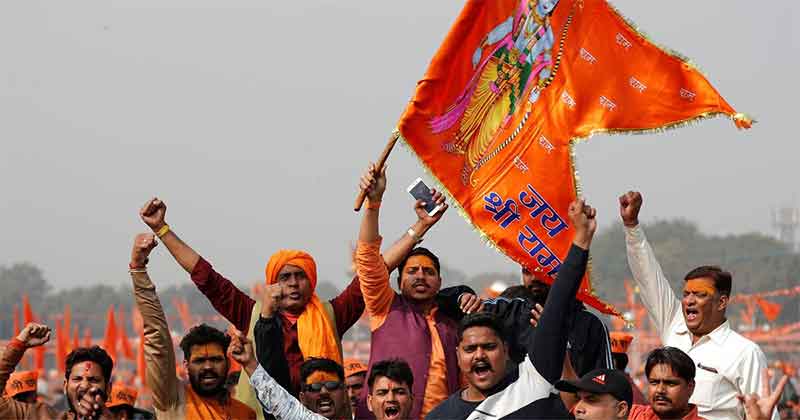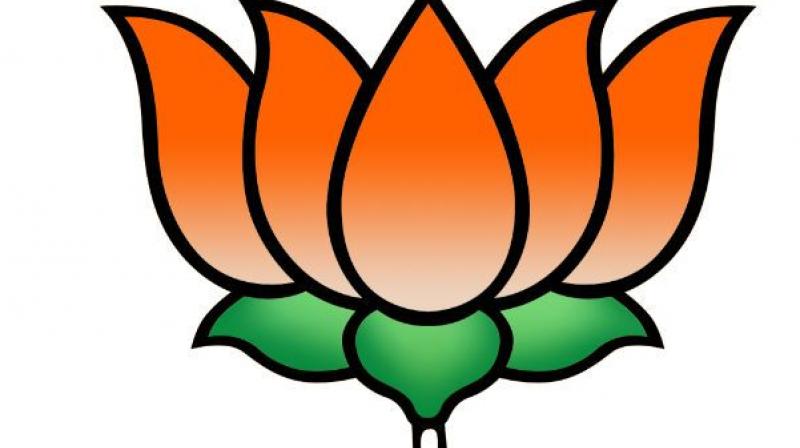
India today seems to be marching not toward inclusive progress but into a regressive spiral of ideological revisionism. Under the influence of Hindutva ideologues, there is a deliberate effort to recast the nation’s history and identity through selective interpretation, erasure, and glorification. This journey backward unfolds in four major steps—each pushing India further away from its constitutional values and closer to a homogenized vision rooted in religious majoritarianism.
The first backward step is the recasting of the post-Independence era, particularly the period from 1947 to 2014. This era is no longer seen as one of democratic consolidation or nation-building, but as a time marked by dynastic misrule, Muslim appeasement, and ideological corruption. Achievements such as land reforms, the Hindu Code Bill, the development of public sector enterprises, and scientific advancement are omitted from the new narrative. Instead, the period is vilified for allegedly prioritizing Muslims over Hindus, with secularism reduced to a euphemism for minority appeasement. The Shah Bano case is often cited as proof of Congress’s pro-Muslim stance, while the foreign policy of Nehru is blamed for India’s strategic failures in Kashmir and with China. It is pointed out that the Muslim rulers were glorified, and Hindu culture was sidelined by “Leftist historians” and presented as a historical injustice. Textbooks were written to maximize Nehru’s contributions, sideline Sardar Patel and worship India’s first Prime Minister. Gandhi too is not spared, often portrayed as naive or responsible for Partition. At the same time, the RSS, which remained on the periphery of the freedom struggle, is promoted as the true defender of Hindu interests during these decades.
The second step backward involves the rewriting of India’s anti-colonial freedom movement. In this narrative, Gandhi and Nehru are accused of betraying the nation by appeasing Muslims and conceding to Partition. Figures like Subhas Chandra Bose, Bhagat Singh are presented not as complementary voices but as the true nationalists who were sidelined. Savarkar, despite his clemency petitions to the British, is called ‘Veer’ and projected as a martyr. Even Nathuram Godse, the man who assassinated Gandhi, has been defended in public speeches and cultural productions such as plays and films that humanize him as a misunderstood patriot. Bhagat Singh’s socialist and atheist ideologies are overlooked, and he is reframed as a Hindu nationalist. The figure of Sardar Patel is weaponized against Nehru, with Hindutva voices asserting that Patel would have better protected Hindu interests. The fact that Patel banned the RSS after Gandhi’s assassination and held serious reservations about its activities is conveniently omitted. Meanwhile, the limited role of the RSS during the freedom struggle is rebranded as ‘cultural nationalism,’ with claims that it laid the groundwork for Hindu unity.
The third step backward is the demonization of the medieval period, particularly the centuries of Muslim rule. This era, which included cultural fusion, architectural marvels, and syncretic traditions, is flattened into a narrative of oppression and destruction. The Mughals are portrayed solely as temple-destroyers and religious tyrants. Akbar’s efforts at religious accommodation are dismissed, and Aurangzeb is repeatedly cited as the archetype of Islamic fanaticism. Rulers like Tipu Sultan, once celebrated for their resistance against the British, are now condemned for their actions against Hindus. The Taj Mahal is claimed to be a converted Shiva temple named Tejo Mahalaya. Lists of Hindu temples allegedly destroyed by Muslim rulers are circulated to justify present-day demands to reclaim sites like Gyanvapi and Krishna Janmabhoomi. The medieval period is reduced to an age of Hindu victimhood and Muslim aggression. Bollywood and popular culture try to carry forward these accusations of whitewashing Muslim rulers and glamorizing ‘invaders.’
The fourth and most sweeping step is the glorification of ancient Hindu India as a golden age of unmatched cultural, scientific, and spiritual superiority. This imagined past is filled with claims of Vedic aviation (Pushpaka Vimana), plastic surgery, nuclear science, and genetic engineering. Such assertions have been made even at scientific conferences and by elected officials. Sanskrit is declared the mother of all languages, and Ayurveda is described as superior to modern medicine. Ancient Hindu kings and dynasties like the Guptas, Cholas, Pallavas, and Kakatiyas are elevated as cultural icons, while Islamic and Christian contributions to Indian society are diminished or demonized. The project of renaming cities to erase Muslim influence—Allahabad to Prayagraj, Faizabad to Ayodhya—is positioned as cultural correction. Ghar Wapsi campaigns urge Muslims and Christians to “return” to their Hindu roots. In cinema, the presence of Urdu, Muslim actors, and Muslim-themed films are increasingly targeted through boycotts and online trolling campaigns. The ultimate goal, as articulated in fringe speeches and mainstream echoes alike, is to build a Hindu Rashtra where Muslims must either assimilate or accept second-class status.
While the world moves rapidly toward Artificial Intelligence and technological transformation, India is veering toward primitive identity politics. Instead of investing in scientific temper and constitutional pluralism, we are being asked to put our faith in mythic pasts and cultural purges. The tragedy lies not just in the rewriting of history but in its weaponization—turning India’s rich diversity into a source of division. What we are witnessing is not the recovery of lost pride, but the loss of democratic spirit. In redefining who we were, Hindutva ideologues are trying to redefine who belongs—and who does not. If we truly want to move forward, we must resist this curated nostalgia and reaffirm the inclusive foundations on which India was built.
Subscribe to Our Newsletter
Get the latest CounterCurrents updates delivered straight to your inbox.
T Navin is an independent writer















































